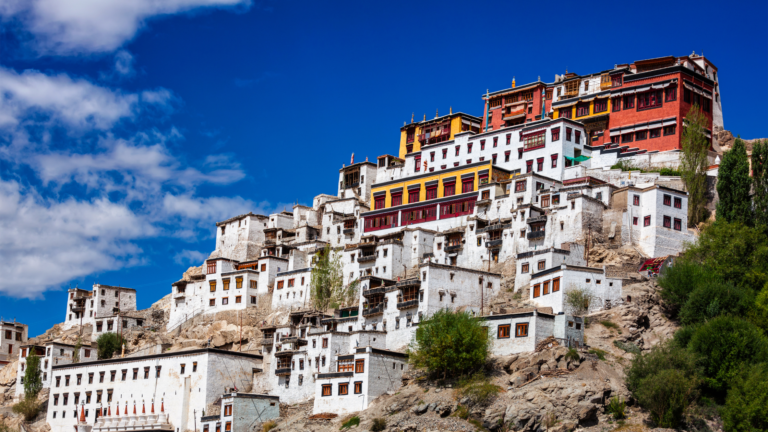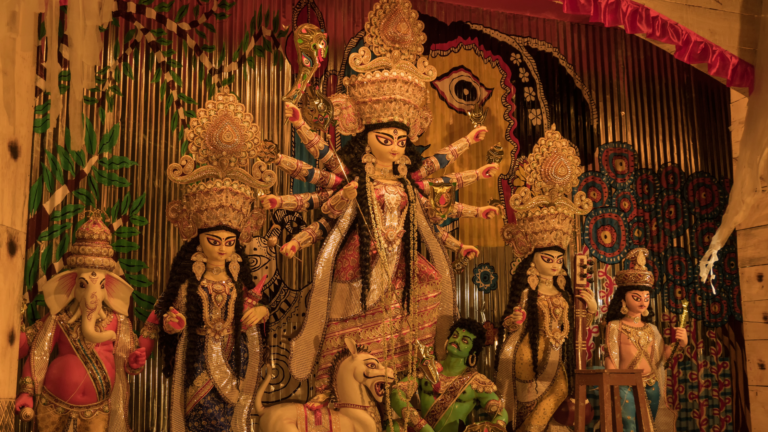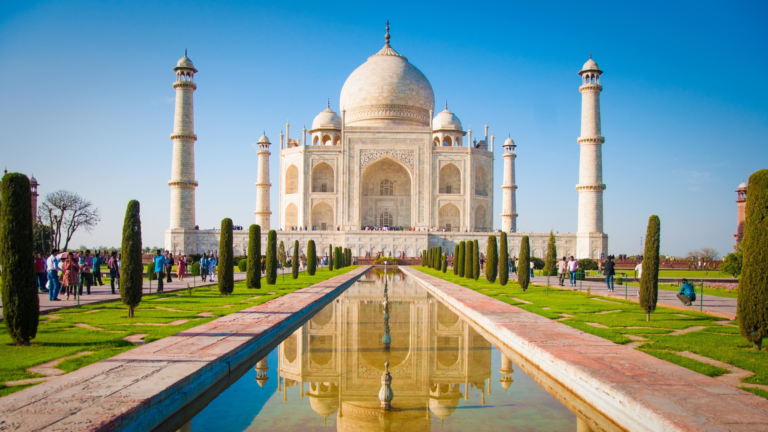India, with its rich cultural heritage and architectural marvels, is home to some of the world’s most iconic UNESCO World Heritage Sites. Each site tells a unique story of India’s history, art, and traditions, offering travelers a glimpse into the country’s ancient civilizations and natural beauty. From the majestic Taj Mahal to the ancient caves of Ajanta and Ellora, here are the top 10 UNESCO World Heritage Sites in India that you simply can’t miss on your next visit.
1. Taj Mahal – Agra, Uttar Pradesh
The Taj Mahal is one of the most recognizable monuments in the world and an enduring symbol of love. Built by Emperor Shah Jahan in memory of his wife Mumtaz Mahal, this marble masterpiece attracts millions of visitors each year.
- Highlights:
- Architectural Marvel: A stunning blend of Mughal, Persian, and Indian architectural styles.
- Symbol of Love: Known for its romantic history and stunning beauty, especially at sunrise and sunset.
Best Time to Visit: October to March
Travel Tip: Visit early in the morning to avoid crowds and witness the monument bathed in soft morning light.
2. Jaipur City – Rajasthan
Known as the Pink City, Jaipur became a UNESCO World Heritage Site for its unique urban planning and architecture. Jaipur’s historic buildings, bustling bazaars, and royal palaces showcase the grandeur of Rajasthan’s heritage.
- Highlights:
- Amber Fort: A majestic fort with intricate carvings and beautiful courtyards.
- Hawa Mahal: The iconic Palace of Winds with its unique façade and hundreds of windows.
Best Time to Visit: October to March
Travel Tip: Don’t miss Jaipur’s vibrant markets for traditional handicrafts and jewelry.
3. Hampi – Karnataka
Hampi was once the glorious capital of the Vijayanagara Empire and is now a UNESCO site known for its ancient temples, palaces, and ruins. The site’s rocky landscapes and historical structures create a surreal experience for visitors.
- Highlights:
- Virupaksha Temple: One of the oldest temples in India, dedicated to Lord Shiva.
- Vittala Temple Complex: Known for its iconic stone chariot and musical pillars.
Best Time to Visit: November to February
Travel Tip: Explore Hampi on foot or by bicycle to fully appreciate the architectural splendor.
4. Kaziranga National Park – Assam
Kaziranga National Park, located in Assam, is a UNESCO Natural Heritage Site renowned for its population of the one-horned rhinoceros. The park’s lush green landscapes and diverse wildlife make it a paradise for nature enthusiasts.
- Highlights:
- Wildlife Safaris: Spot rhinos, tigers, elephants, and exotic bird species.
- Scenic Beauty: Kaziranga’s wetland ecosystems and grasslands create picturesque scenery.
Best Time to Visit: November to April
Safari Tip: Book a morning or evening safari for the best chances of wildlife sightings.
5. Ajanta and Ellora Caves – Maharashtra
The Ajanta and Ellora Caves are ancient rock-cut caves that date back to the 2nd century BCE. These caves are famous for their intricate sculptures, paintings, and architectural brilliance, showcasing India’s ancient art.
- Highlights:
- Ajanta Caves: Known for stunning Buddhist murals and paintings.
- Ellora Caves: A complex of Hindu, Buddhist, and Jain temples carved out of rock.
Best Time to Visit: October to March
Art Tip: Spend ample time at the Kailasa Temple in Ellora, one of the largest monolithic structures in the world.
6. Sun Temple – Konark, Odisha
The Sun Temple of Konark is an architectural marvel dedicated to the Sun God. Shaped like a giant chariot, the temple is adorned with intricate carvings and sculptures, making it a remarkable example of ancient Indian architecture.
- Highlights:
- Chariot Structure: The temple is designed as a massive chariot with wheels and horses.
- Exquisite Sculptures: Known for its intricate stone carvings depicting scenes of life.
Best Time to Visit: October to February
Travel Tip: Plan your visit during the Konark Dance Festival to experience traditional Indian dance performances at the temple.
7. Red Fort Complex – Delhi
The Red Fort is an iconic symbol of India’s rich history and was the main residence of Mughal emperors for over 200 years. This red sandstone fortress reflects the grandeur of the Mughal Empire.
- Highlights:
- Architectural Grandeur: Massive red sandstone walls and beautifully designed interiors.
- Sound and Light Show: An evening show narrates the history of the fort and the Mughal era.
Best Time to Visit: October to March
Travel Tip: Visit on the eve of Independence Day (August 15) to witness the celebrations.
8. Rani ki Vav (The Queen’s Stepwell) – Patan, Gujarat
Rani ki Vav is a stunning example of Stepwell architecture and was built in memory of a king by his queen. This UNESCO site is known for its intricate carvings, pillars, and the sheer depth of the stepwell.
- Highlights:
- Stepwell Architecture: A seven-level stepwell with finely detailed carvings.
- Historical Significance: Depicts scenes from mythology, showcasing India’s rich cultural heritage.
Best Time to Visit: October to March
Cultural Tip: Rani ki Vav is particularly beautiful at sunset, with warm light enhancing its carvings.
9. Western Ghats – Across Maharashtra, Karnataka, Tamil Nadu, and Kerala
The Western Ghats is a UNESCO Natural Heritage Site and one of the world’s top biodiversity hotspots. Known for its lush forests, waterfalls, and exotic wildlife, it offers incredible trekking and nature experiences.
- Highlights:
- Trekking Trails: Numerous trails offer spectacular views of valleys, mountains, and waterfalls.
- Flora and Fauna: Home to rare species, including the Nilgiri Tahr and Malabar giant squirrel.
Best Time to Visit: October to February
Nature Tip: Visit in winter for the best weather and clear skies for trekking.
10. Fatehpur Sikri – Uttar Pradesh
Fatehpur Sikri, once the capital of Emperor Akbar, is a UNESCO World Heritage Site that reflects the grandeur of Mughal architecture. The city was abandoned but remains well-preserved, offering a fascinating insight into Mughal culture.
- Highlights:
- Buland Darwaza: The largest gateway in the world, a true marvel of Mughal architecture.
- Panch Mahal: A unique five-story palace with beautiful architectural details.
Best Time to Visit: October to March
Historical Tip: Hire a guide to learn about the history and legends associated with this magnificent city.
Conclusion: Discover India’s Rich Heritage
India’s UNESCO World Heritage Sites are a testament to its rich and diverse cultural history. From ancient monuments and temples to natural wonders, these sites offer unique experiences for every traveler. Whether you’re drawn to the architectural grandeur of forts and palaces or the serene beauty of national parks, India’s heritage sites promise unforgettable memories and insights into the country’s vibrant past. Plan your journey to explore these top UNESCO World Heritage Sites in India and witness the timeless beauty of India’s history and culture.






